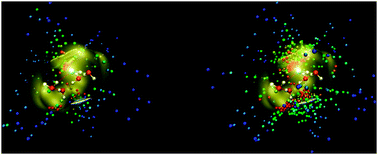Constructing simple yet accurate potentials for describing the solvation of HCl/water clusters in bulk helium and nanodroplets†
Abstract
The

* Corresponding authors
a Fakultät für Chemie, Universität Duisburg-Essen, Universitätsstrasse 5, 45117 Essen, Germany
b Lehrstuhl für Theoretische Chemie, Ruhr-Universität Bochum, 44780 Bochum, Germany
c Dipartimento di Chimica, Università degli Studi di Sassari, Istituto Officina dei Materiali del CNR, UOS SLACS, Via Vienna 2, 07100 Sassari, Italy
d
Institute of Informatics, Istanbul Technical University, Maslak, 34469 Istanbul, Turkey
E-mail:
Georg.Jansen@uni-due.de
The

 Please wait while we load your content...
Something went wrong. Try again?
Please wait while we load your content...
Something went wrong. Try again?
A. Daniel Boese, H. Forbert, M. Masia, A. Tekin, D. Marx and G. Jansen, Phys. Chem. Chem. Phys., 2011, 13, 14550 DOI: 10.1039/C1CP20991D
To request permission to reproduce material from this article, please go to the Copyright Clearance Center request page.
If you are an author contributing to an RSC publication, you do not need to request permission provided correct acknowledgement is given.
If you are the author of this article, you do not need to request permission to reproduce figures and diagrams provided correct acknowledgement is given. If you want to reproduce the whole article in a third-party publication (excluding your thesis/dissertation for which permission is not required) please go to the Copyright Clearance Center request page.
Read more about how to correctly acknowledge RSC content.
 Fetching data from CrossRef.
Fetching data from CrossRef.
This may take some time to load.
Loading related content
